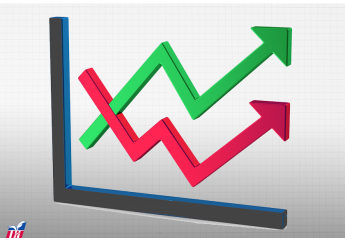10:30 a.m. Market Snapshot | July 27, 2021

Corn futures are 3 to 4 cents higher at midsession.
- Corn futures extended yesterday’s gains after USDA’s latest weekly crop condition ratings fell short of expectations, intensifying concern over persistent dryness in the northwest Corn Belt.
- USDA yesterday said it rated 64% of U.S. corn either “good” or “excellent” as of Sunday, down from 65% a week ago and below expectations of 65%, based on the average analyst estimate.
- When USDA's weekly condition ratings are plugged into the weighted Pro Farmer Crop Condition Index (CCI; 0 to 500-point scale, with 500 representing perfect), the corn crop declined 2.5 points to 366.1 points, 7.3 points below the five-year average for corn.
- World Weather Inc.’s latest two-week outlook for the central U.S. called for less rain than was predicted yesterday. “The driest areas from the eastern Dakotas into Minnesota and northern Iowa should see increases in stress and declining yields,” World Weather said in a report today, with hot temperatures during the middle of this week “causing quick increases in stress.”
- Most of the corn crop has completed pollination. USDA yesterday also reported 79% of the corn crop had reached the silking stage, ahead of the 73% average for the previous five years.
- Consultant Michael Cordonnier maintained his U.S. corn yield projection of 175.5 bu. per acre this week, noting that with the exception of the northwest Corn Belt, “most of the corn has had a good July with adequate moisture and moderate temperatures.” The 2020 U.S. crop yielded an average of 172 bu. per acre, according to USDA.
- Cordonnier reduced his corn harvest projection for Brazil by 2 million metric tons (MMT) to 86 MMT, citing frost damage to the late-planted safrinha crop and another expected cold snap.
Soybean futures are 12 to 16 cents higher, while soybean meal are solidly higher and soybean oil futures are choppy to lower.
- Soybean futures rose after unexpectedly low USDA condition ratings compounded worries over dry conditions as the crop approaches key development phases in August.
- USDA rated 58% of soybean acreage “good” to “excellent” as of Sunday, down from 60% a week earlier and 72% for the same period a year earlier. Analysts expected the good-to-excellent figure to hold at 60%.
- Based on our weighted CCI, the soybean crop fell 1.1 points to 351.2 points, 9.6 points below the five-year average for soybeans.
- Cordonnier kept his U.S. soybean yield projection unchanged at 50 bu. per acre. Last year, the U.S. crop yielded an average of 50.2 bu. per acre, according to USDA.
- Brazil exported 1.7 MMT of soymeal during June, just off its May record, according to Refinitiv. Ship lineup data shows Brazil will likely export 1.69 MMT of soymeal this month. Brazil’s year-to-date soymeal exports of 9.07 MMT top last year’s record.
- Technical indicators, including stochastics and RSI, are neutral to bearish for soybean futures, signaling sideways to lower prices near-term. If the November contract extends its rally off June's low, upside targets would include July’s high, $14.23, and the June contract high, $14.80.
Wheat futures are 2 to 7 cents higher, led by gains in spring wheat.
- Spring wheat futures led strength in the wheat complex after USDA’s crop condition ratings fell to the lowest level since the 1988 drought.
- Spring wheat was rated 9% “good” to “excellent,” down two points from week-ago, with 66% of the crop now rated “poor” to “very poor,” up from 63% a week ago, USDA said yesterday.
- Based on our weighted CCI, the spring wheat CCI fell another 6.4 points over the past week to 216.6 points, 140.7 points below the five-year average.
- USDA also reported the U.S. winter wheat crop was 84% harvested at the start of this week, up from 73% a week earlier and slightly higher than analyst expectations, which averaged 83%.
- Wheat futures are under pressure as the U.S. winter harvest adds fresh supplies amid sluggish export demand. Spring wheat has extended last week’s decline amid technical weakness and beliefs the market may have put in a top
- In overnight demand news, Egypt tendered to buy an unspecified amount of wheat from global suppliers, with results of the tender expected later this morning. Also, Pakistan tendered to buy 110,000 MT of wheat.
Live cattle futures are mostly higher at midsession, while feeder cattle are mixed.
- Live cattle extended yesterday’s rally, with August futures hitting the highest price in over three week, following unexpectedly low numbers in USDA’s Cattle on Feed and Cattle Inventory reports.
- Continued firmness in wholesale beef prices also lent support to futures. Choice cutout values yesterday averaged $267.93, up $1.30 from Friday and the fourth consecutive daily gain since the market hit a 3 1/2-month low last week.
- August live cattle rose as high as $123.975 per hundredweight, the highest intraday price since $124 on July 2. The contract’s technical strength this week signals a short-term low has been established, with upside targets including $124.325, the high so far for July. Support is seen around $118.85 and $117.23.
- Feeder futures are seeing a mild pullback after August futures yesterday touched $163.15, a contract high and the highest for a nearby contract since the market surpassed $165 in March 2016.
Lean hog futures are slightly higher and near five-week highs.
- Hog futures remain supported by firmer cash markets and stronger retail demand that’s pushed wholesale pork prices higher over the past month.
- Carcasses on national direct markets yesterday averaged $105.99, up $1.40. Carcass cutout values averaged $122.94, up 57 cents from Friday and the highest since June 17. Since hitting a two-month low at $107.82 on June 23, cutout values have surged 14%.
- August lean hog futures remain at a discount to the CME lean hog index, which was at $112.22 for the two days ending July 23, up 1 cent from the previous price.
- Technical indicators, such as stochastics and the Relative Strength Index, are overbought but remain neutral to bullish, signaling that sideways to higher prices are possible near-term.
- August futures today reached $108.125, the highest intraday price since $109.625 on June 18. If August futures extend the rally off the June low, upside targets include the 50-day moving average around $108.30.






